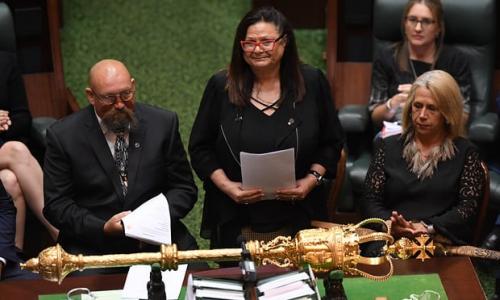
The State of Victoria acknowledges Victorian traditional owners as the first peoples of what is now known as Victoria. From time immemorial Victorian traditional owners have practised their laws, customs and languages, and nurtured Country through their spiritual, cultural, material and economic connections to land, water and resources. Through the strength, resilience and pride of Victorian traditional owners, their cultures, communities and economies endure and continue to grow and thrive today. Aboriginal Victorians are an intrinsic and valued part of Victoria's past, present and future.
The State acknowledges the diversity of Aboriginal Victorians, their communities and cultures, and the intrinsic connection of traditional owners to Country.
Aboriginal Victorians are Victorian traditional owners, clans, family groups and all other people of Aboriginal and Torres Strait Islander descent who are living in Victoria.
Victorian traditional owners maintain that their sovereignty has never been ceded, and Aboriginal Victorians have long called for treaty. These calls have long gone unanswered. The time has now come to take the next step towards reconciliation and to advance Aboriginal self-determination. Aboriginal Victorians and the State are ready to talk treaty.
In recent times, Victorian traditional owners and the State have worked together to ensure traditional owners play a lead role in managing and protecting land, natural resources and cultural heritage. To date, consultations with Aboriginal Victorians have emphasised the leading role and authority of traditional owners when it comes to treaty. Through this historic Act, all Aboriginal Victorians and the State are building on this and other good work and embarking on a renewed and mature relationship. This relationship is one of equal partnership, founded on mutual respect and a commitment to justice and equality for Aboriginal Victorians, and to promoting reconciliation between Aboriginal and non-Aboriginal Victorians.
The State will work to strengthen this relationship as it walks alongside Aboriginal Victorians on the pathway to treaty. This Act is an important first step on the journey. It is an expression of the State's commitment to lay the groundwork for future treaty negotiations in Victoria. To translate this commitment into outcomes, it is essential that Aboriginal Victorians and the State work in partnership at all stages of the journey.
In doing so, the State recognises the importance of the treaty process proceeding in a manner that is consistent with the principles articulated in the United Nations Declaration on the Rights of Indigenous Peoples, including free, prior and informed consent. By continuing to consult and cooperate in good faith, the State will endeavour to take each step forward on the pathway toward treaty together with traditional owners and Aboriginal Victorians.
For more information, read from the Guardian:
https://www.theguardian.com/australia-news/2018/jun/22/victoria-passes-h...
http://www.legislation.vic.gov.au/domino/Web_Notes/LDMS/PubPDocs.nsf/ee6...$FILE/581403bab1.pdf
Preamble
Accordingly, this Act requires the State and a future Aboriginal Representative Body, as the voice chosen by Aboriginal Victorians, to work together in partnership to establish the entities, rules and resource base necessary to facilitate future treaty negotiations. The State and future Aboriginal Representative Body will at all times work collaboratively and always in good faith to achieve their joint vision for a state that celebrates Aboriginal Victorians in all areas of life.
The contents of a future treaty or treaties are yet unknown. A future treaty or treaties can help heal the wounds of the past, provide recognition for historic wrongs, address ongoing injustices, support reconciliation and promote the fundamental human rights of Aboriginal peoples, including the right to self-determination. A future treaty or treaties should enhance the existing laws of this State, acknowledge the importance of culture to Aboriginal identity, bring pride to all Victorians and have positive impacts for all of Victorian society. The State is committed to working with Aboriginal Victorians to negotiate a treaty or treaties on terms that will help tangibly improve their lives, and the lives of future generations.
The injustices of the past cannot be undone. The State is pursuing treaty because it is the right thing to do. Victoria needs a treaty or treaties that are reciprocal, and that through truth and justice provide far reaching benefits for Aboriginal Victorians. For traditional owners, Aboriginal children, elders, and stolen people; for a society that all Victorians can all be proud of; treaty will be for all Aboriginal Victorians. In the spirit of reconciliation, treaty will be for all Victorians.
With this Act Aboriginal Victorians and the State join hands to take the first step on the pathway towards treaty.
Part 1—Preliminary
1 Purposes
The purposes of this Act are—
(a) to advance the process of treaty making between traditional owners and Aboriginal 5 Victorians, and the State; and
(b) to provide for a mechanism for the State to recognise the Aboriginal Representative Body as the sole representative of traditional owners and Aboriginal Victorians for the 10 purpose of establishing elements necessary to support future treaty negotiations; and
(c) to enshrine the guiding principles for the treaty process; and
(d) to require the Aboriginal Representative 15 Body and the State to work together to










Add new comment